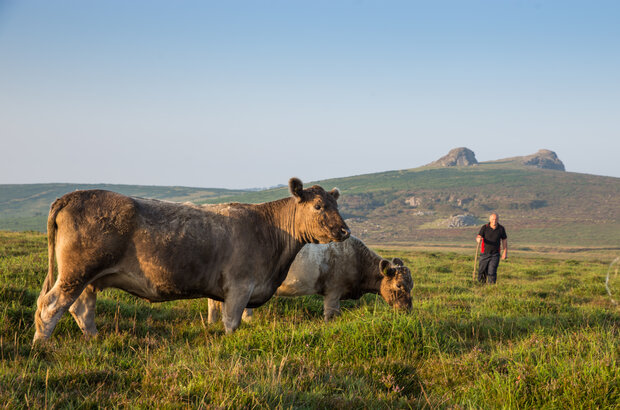
You might remember that in the Agricultural Transition Plan, we mentioned that we would introduce a Farming in Protected Landscapes programme.
We’re preparing to release more information about that programme in the coming weeks, but before then, I wanted to share a few reasons why protected landscapes are so important.
National Parks and Areas of Outstanding Natural Beauty (AONB) are special and unique. Together they make up some of our most beautiful and iconic protected landscapes.
In England, there are 10 National Parks and 34 AONB. Together, they cover nearly 25% of land in England. Natural England's map shows their size and location across England.
These places, designated in statute for their natural beauty, are also home to some of our most important species.
These areas make up an important part of the government’s commitment to protect 30% of land by 2030 so that they continue to be havens for nature and places that everyone can visit and enjoy.
Reducing carbon emissions
National Parks and AONB play an important role in the current fight against the rise of global carbon emissions. These places are home to some of our most important species, around 60% of England’s remaining deep peat, and over 50% of our Site of Special Scientific Interest (SSSIs), making them vital to nature recovery and nature-based solutions to climate change.
A huge 119 megatons of carbon is stored within the peat soils of the English National Parks which is the equivalent of the annual emissions of England.
The rural economy
Protected landscapes do much to support local rural communities, helping to support jobs and investment. National Parks attract 94 million visitors per year, directly supporting 75,000 jobs whilst combined, the National Parks and AONBs attract over 260 million visitors a year.
Biodiversity
Protected landscapes range from lowland landscapes, such as the Cotswolds and the Norfolk Coast, to uplands such as the North Pennines and the Lake District.
By having such a wide geographical range, they also contain a wide range of species that are important for nature and nature recovery. Within the National Parks of England are contained 41% of upland hay meadows and 80% of upland chalk grassland. These places are also home to an array of wildlife from red squirrels to the Bilberry bumblebee.
Wellbeing
Protected Landscapes have an important role to play in our health and wellbeing. Around 64% of England’s population lives within 15 miles of a National Park or AONB and they’re great places to walk and cycle.
Stay up-to-date
As I mentioned, we’ll be sharing our plans to support farming in protected landscapes in the coming weeks, so do subscribe to the blog for further updates.
The Landscape Review sets out a compelling vision for more beautiful, more biodiverse and more accessible National Parks and Areas of Outstanding Natural Beauty, which the government will respond to soon.
Finally, don’t forget to sign up to Defra’s e-alerts if you haven't already.
Gallery
- Laura Tucker: West Prawle Farm
- Tractor above Gouthwaite Reservoir in Nidderdale AONB © Paul Skirrow
- Low Moss Gill below the summits of Place Fell and High Dodd in the Lake District, UK.
- North York Moors National Park
- Farming on Dartmoor Photos © CareyMarks.co.uk
- Ullswater by Michael Sturla
- Laura Tucker: West Prawle Farm
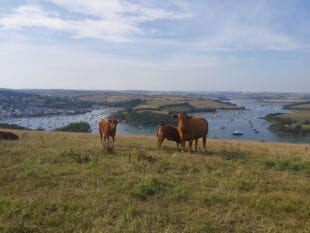
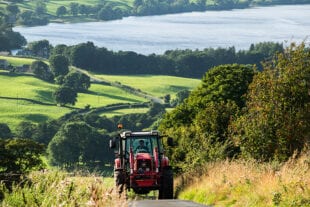
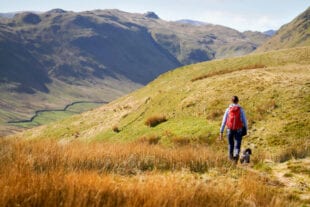


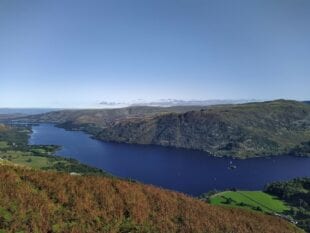
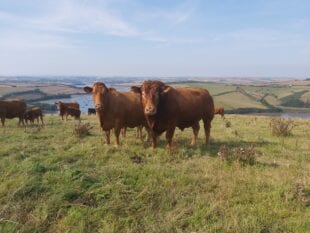
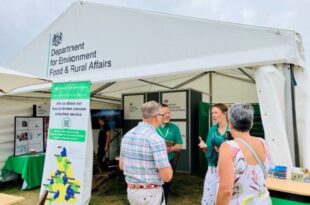
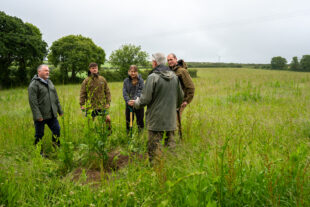


10 comments
Comment by Andrew Newman posted on
You can view an interactive map of AONBs and National Parks using the MAGIC service at the following link:
https://magic.defra.gov.uk/MagicMap.aspx?chosenLayers=aonbIndex,npkIndex,backdropDIndex,backdropIndex,europeIndex,vmlBWIndex,25kBWIndex,50kBWIndex,250kBWIndex,miniscaleBWIndex,baseIndex&box=-1247753:-159519:1592247:1240481&useDefaultbackgroundMapping=false
You can access AONB and National Park data for use in geographic information systems at https://environment.data.gov.uk.
Comment by Hallam Mills posted on
Magic's good except there are mistakes on some CROW designations.
Comment by A Rothwell posted on
By restricting this support to National Parks and AONB’s, you miss out the upland areas in the North, which come under immense pressures from the urban areas in Manchester and other Northern cities and towns.
The Pennine hills do not, to a great extent, have statutory designation, but act as a recreational area for urban dwellers, with arguably more pressure than say, the Lake District or Peak District, which have statutory protection and dedicated teams of rangers, volunteers and the backing of legal protection.
You also risk creating a “two tier” uplands system with those in the Parks and AONB’s given a significant advantage over other upland farmers, subject to the same business pressures, but without the ability to diversify into tourism.
Comment by Helen Rhodes posted on
As a farmer on the urban fringe, I would urge you to consider this from a different angle.
Which landscapes are subject to the greatest year-round population pressure?
Which landscapes have the greatest capacity to influence and effect more people on a daily basis?
So, 64% of the population are within 15miles of a protected landscape, how many of those 64% actually utilise those landscapes as opposed to the farmland on their doorsteps? I would argue that over my 300Ha with 25+km of mature hedge and tracts of environmental options I have a greater impact on people's day to day wellbeing, yet we get zero support with regard managing public access, even going through phases where we may be fined for not preventing access whilst at the same time the government is promoting access to the public without any clarity at to the limitations of said access.
The very fact that defra/government is now labelling National Parks and AONB's "protected landscapes", announces to the public that, by implication, all other landscapes are not protected. This is effectively creating a two-tier perception of the importance of land, telling people that the places where you go on holiday are special (protected) whereas the places where you walk your dogs everyday don't have any protection, reinforcing peoples' opinion that they have a 'right to roam' across all farmland, making it increasingly difficult to protect biodiversity, and thus defeating what you are trying to achieve.
Happy to discuss!
Comment by Ian May posted on
Is there any scope to include the UK Man and Biosphere Reserves in the list of areas to be focused on under protected landscapes? MAB sites have been recognised internationally by UNESCO for their importance both environmentally and culturally and I would think they would fit well into this category.
Best regards
Ian
Comment by Rachel Thompson MBE posted on
Please could you tell me why we are promoting / wasting tax payers' money on permissive access in FPL?
The last stewardship scheme invested £millions in short term access, 58,000 km. Much of it in the wrong place, poorly promoted, poorly signed and most of it disappeared when the scheme ended. I understand that Natural England has been asked to find out how much remains. If anecdotal evidence is to be believed, very little.
The Protected Landscape scheme is only for three / four years! What will
happen to all the permissive access then? The scheme calls for legacy,
permissive access is not a legacy.
Permissive access is not a public good, it does not provide a worthwhile
legacy for tax payer investment. It does not answer the need for strategic
public access as promoted / required in the Government's own Rights of Way Improvement Plan advice to Local Highway Authorities for routes that cross / avoid roads, provide community links and circulars and support the rural economy - all the benefits that in the ELM 159 test participants recognised as important.
Permissive access does not accord with the 25 YEP which looks to the
creation of permanent green infrastructure, or accord with the Julian Glover
recommendations or the Lawton review with regard to corridors for nature
recovery and access for people.
If we invest in permissive green access / biodiversity corridors for people
and wildlife (building back better / helping nature recover / proving for
public health and engagement with nature) are we expecting to plough them out again / lock the gate when the scheme ends? That will go down as well as it did last time. That has not been forgotten by the paying public. I
thought we were meant to be building back better?
In the ELMs 159 test it was found that landowners will support permanent access provided properly located, decent reward and educated public. They recognised the advantages that strategic access and biodiversity corridors can bring to the rural economy and to communities.
Please let us work for the long term.
Comment by The Farming in Protected Landscape team. posted on
Hi Rachel,
The Farming in Protected Landscape programme offers funding to farmers and land managers in Areas of Outstanding Natural Beauty (AONBs), National Parks and the Broads to deliver projects that support nature recovery, mitigate the impacts of climate change, provide opportunities for people to enjoy the landscapes and support nature-friendly, sustainable farm businesses.
The programme is demand led and projects proposed by farmers can cover a range of different things. This includes funding public access, such as improving existing rights of way or the provision of permissive access. Equally, the programme could be used to help facilitate the provision of permanent access.
We recognise that the ELM Test and Trial in which you were involved highlighted many landowners’ willingness to provide permanent access, though we also know that many others need a more gradual introduction to this provision on their land.
National Parks and AONBs believe that through the Farming in Protected Landscape programme, farmers and other land managers should be able to propose projects that include permissive access, recognising it can help build support for public access and provide an opportunity for the farmer or landowner to test its impact. Furthermore, it is likely that any permissive access within a project will also include a range of funded capital works or environmental land management activity that further supports the access or wider programme objectives, creating longer term benefits for visitors and the environment.
The Farming in Protected Landscape team.
Comment by Rachel Thompson MBE posted on
Dear FiPL team
Thank you very much for your reply about access which I have passed on to the Mendip Hills AONB team and to the ELMs 159 team. It is heartening to see that we can pursue access creation under this scheme so that more people can benefit from access to landscape and nature. I agree with your comments about permissive access trials, this is in line with the findings in the ELM test where 50% of participants said that an access trial would be a useful tool to monitor a created or upgraded route before committing to a permanent route. Will my question and your response be circulated widely among the Protected Landscapes that are involved in the scheme? There could be some useful learning about access provision over the lifetime of the scheme.
Best regards
Rachel Thompson MBE
Comment by The Farming in Protected Landscape team. posted on
Absolutely. We'll share your comment (and our response) with our engagement and communications colleagues. They work with AONBs and cascade messages to them. Are you involved in our co-design work?
Comment by Rachel Thompson MBE posted on
Hello FiPl
I am a member of the Mendip Hills AONB FiPL panel plus the Mendip Team that delivered ELMs 159 has lodged an EOI in the forthcoming landscape recovery test and trials. We are keen to build on the result of 159 to explore / test what mechanisms, advice, long term planning and co - funding are required / available to make permanent strategic access and biodiversity networks (through creating connecting individual aspirational routes / corridors) 'shovel ready' in a large area.
I understand that the DEFRA teams or policy units working on / delivering the landscape and farming may not communicate with each other as you are all working on different aspects. So I don't know if The Trails Trust / Mendip AONB involvement in ELMS crosses over into FiPL co-design? It would be useful if it could because, as our 50 participants said, access affects pretty much every holding whether in a CSS / future ELM scheme or not. They are very keen to see a flexible simple scheme come forward, the three big motivations being reward, location and education. Such a scheme would help the huge band of volunteers too who are keen to get stuck in and help landowners deliver access and biodiversity where it is most needed.